Jaipur has legacy temples built by the Jaipur royalty. The Kacchawa Rajput rulers of Jaipur were devout followers of Krishna Bhagwan; they built many Krishna temples in Jaipur. If you are a regular reader of JaipurThruMyLens, you must be aware of the famous heritage temples in Jaipur. While most of these are accessible to the public, a few are an exception. The Raj Rajeshwar Temple is one such temple in Jaipur. Dedicated to Lord Shiva, this temple is a part of Jaipur City Palace. It is open for “Darshan” only on two occasions – Maha Shivratri and Govardhan. It could have easily been the famous Shiv temple in Jaipur had it been accessible to the public.
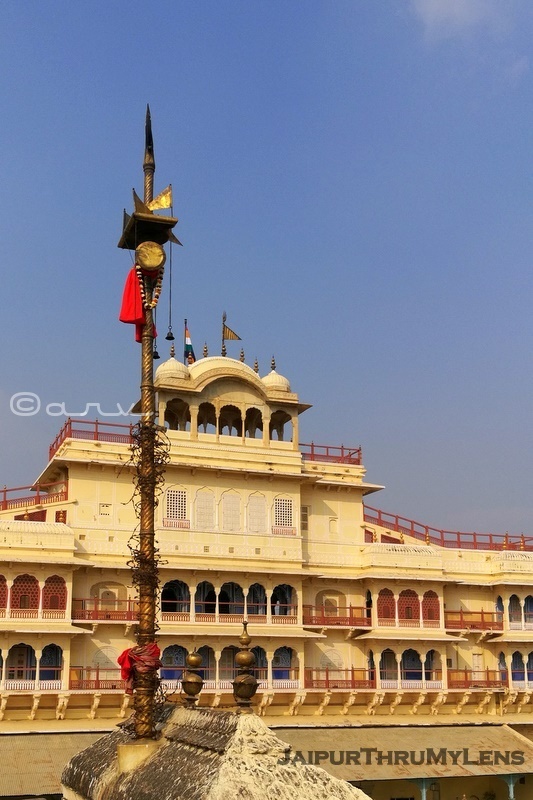
History
The temple was established in 1865 AD/1921 Vikram Samvat by Maharaja Sawai Ram Singh II. Jaipur rulers were ardent Lord Krishna followers except for Maharaja Sawai Ram Singh II. He was a devout Shiva Bhakt. This modest temple makes a departure from the usual palatial temples built by the Jaipur royalty like Ramchandra Temple. The likely reason could be the paucity of space because it was constructed almost 125 years after the City Palace was founded. The space must have been “managed” in the palace to accommodate a temple.
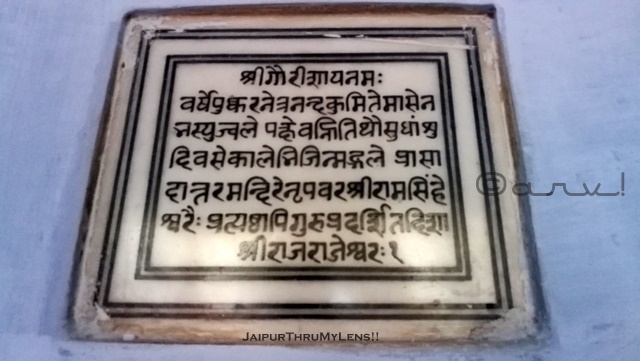
Here is a picture of the City Palace as seen from the temple. Seen here is the Chandra Mahal in the background and Pritam Chowk in the foreground. Pritam Chowk is famous for the four beautiful City Palace gates representing the four seasons. These gates are very popular among travelers. They are one of the top Instagram-worthy places in Jaipur, especially the Leheriya and Peacock Gate.
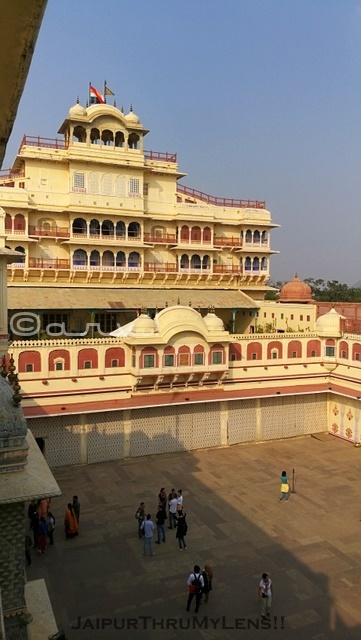
Who was Maharaja Sawai Ram Singh II?
Maharaja Sawai Ram Singh II was one of the prominent kings of Jaipur who reigned between 1835-1880 AD. Being a forward-looking and development-oriented ruler, he undertook many initiatives including the building of a modern hospital, schools, and colleges in Jaipur. He is credited with the reorganization of the police, revenue department, and piped water system, among many other things. His rule is associated with peace and development. He was one of the early photographers in India; probably the only photographer king of his times.
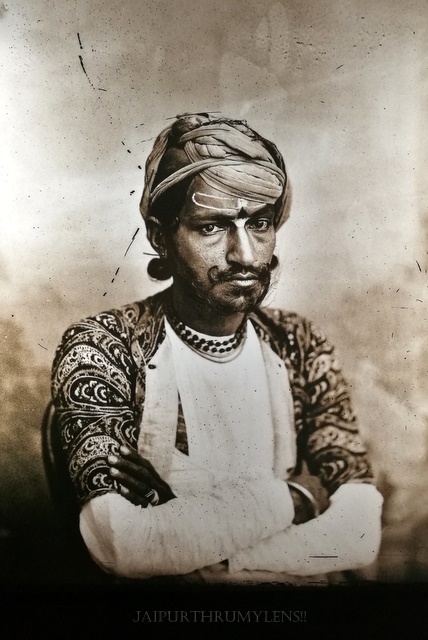
A Visit to the Raj Rajeshwar Temple
The access to the temple is through Chandni Chowk. Here is a picture of the same from the previous post Rang Malhaar | Welcoming the Monsoon in Jaipur
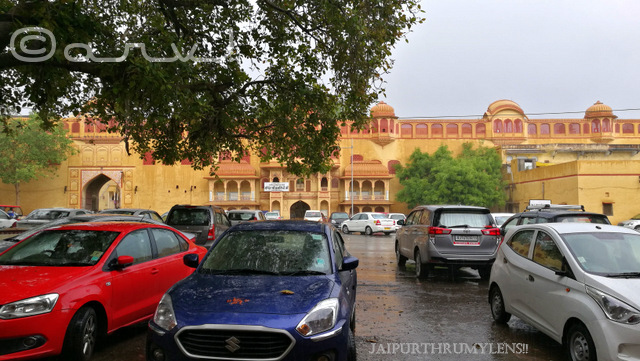
The temple is near the royal kitchen of Jaipur City Palace.
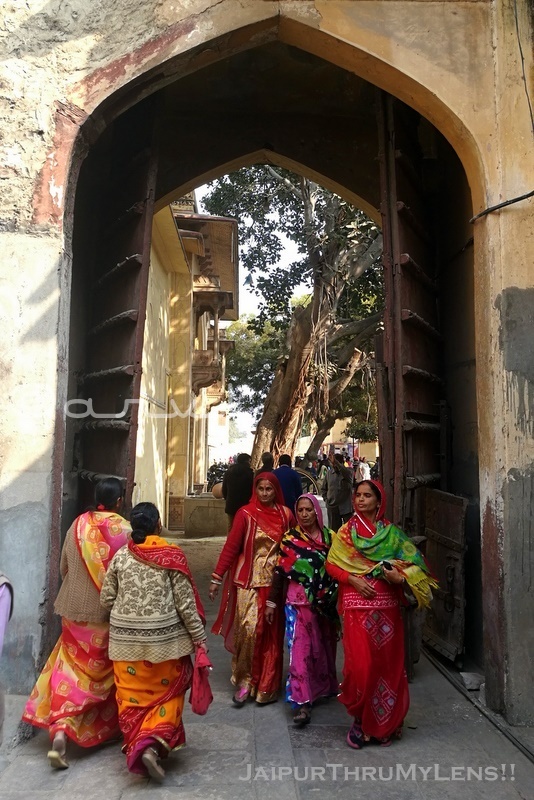
The temple is reached through a host of galleries and corridors. I visited this temple on the occasion of Maha Shivratri. People residing in the walled city retain the tradition of visiting this temple on this day. The Raj Rajeshwar temple was teeming with devotees.
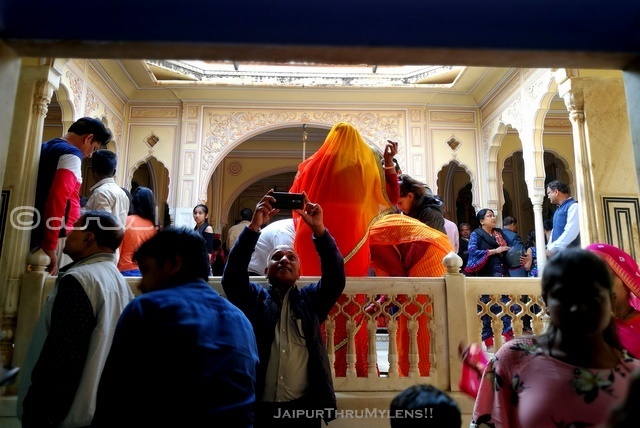
Fortunately, this is a lesser-known Shiva temple in Jaipur, therefore the crowd wasn’t bad. Other Lord Shiva temples in Jaipur – Tarkeshwar Temple and Ekling Temple in Moti Dungri Fort witness a mighty rush.
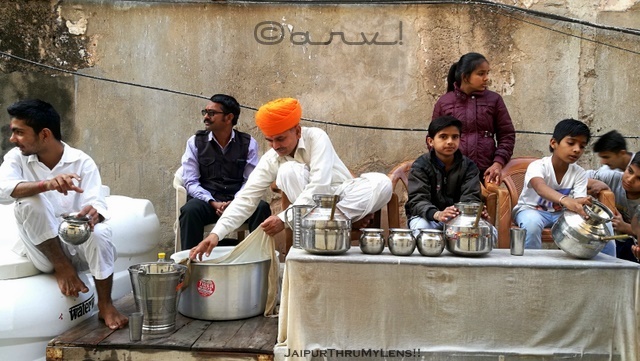
A group of volunteers had set up to provide water service because people offered water to the Shivling in temples dedicated to Lord Shiva. While many devotees carry water from their residences, some choose to use the services of the volunteers to fill water in Ramjhara pots. What is Ram Jhara? Ram Jhara is unique to certain regions in India; it is a pot made from copper/ brass/ steel with an opening on the top and a long pipe on one side to pour water.
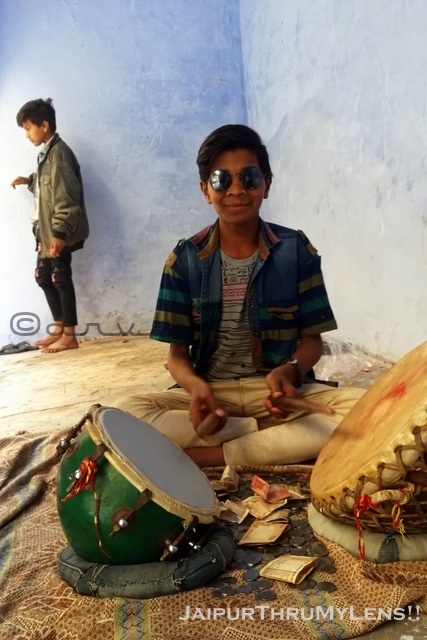
Farther ahead, a young boy was playing the drums- Dhol. The mood was joyous. I assume the kids here are residents of Janani Deori or sections connected with this part of the City Palace of Jaipur.

On crossing a long dark passageway similar to the ones in Hawa Mahal, I reached a terrace. A couple of sentries were guarding the site. One of the guards was instructing people to remove their leather waist belts along with footwear before entering the temple.
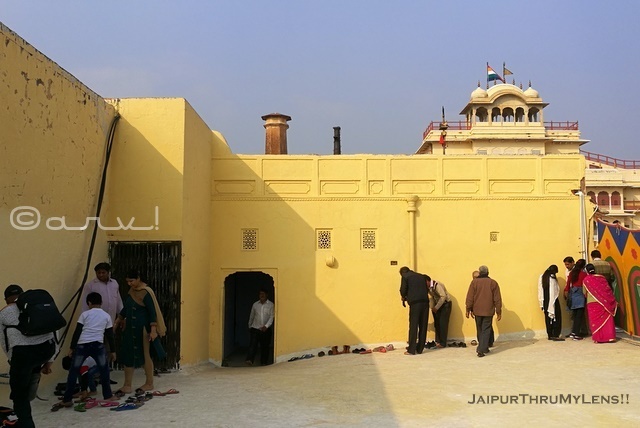
One needs to enter a dark alley from this spot before reaching the sanctum. At the other end of the alley was another gate. I presume this possibly provided Maharaja Sawai Ram Singh II direct access from the City Palace. The temple door has intricate carvings featuring flowers and peacocks. Customarily, temple doors are covered with brass foil, but this being a royal temple, it was covered with silver foil.
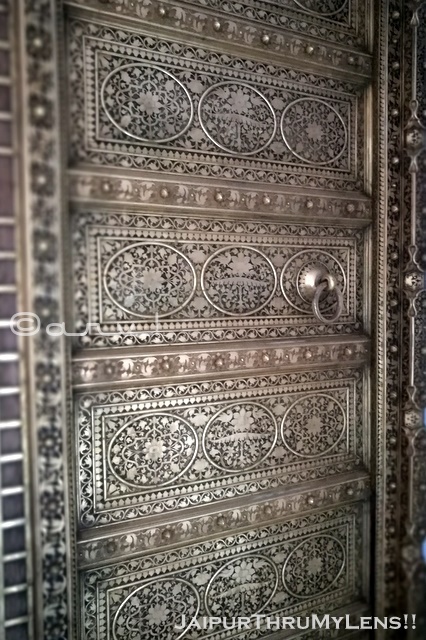
The entrance is directed towards a small courtyard that is open to the sky.
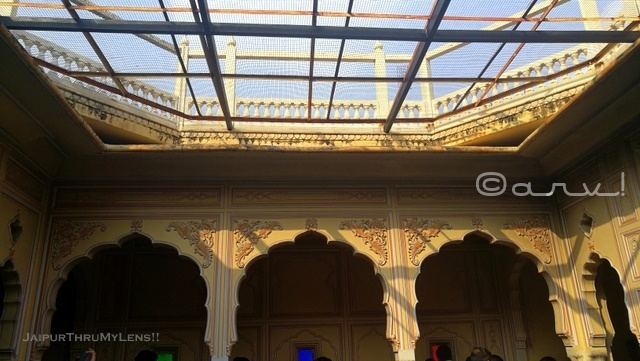
The temple has simple yet beautiful interiors. Mughal-styled niches and flowers adorn the walls and arches.
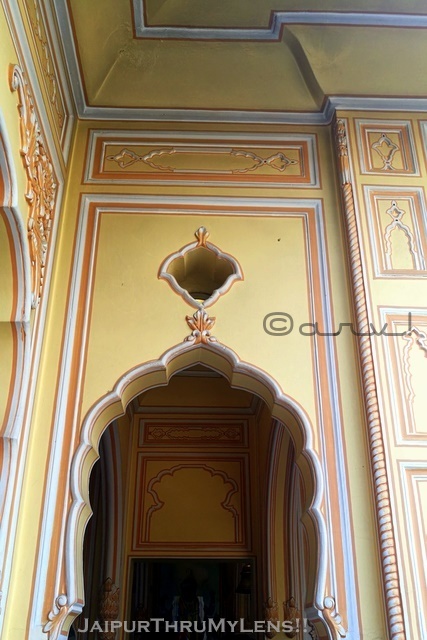
White marble is one of the prominent materials used in this temple. Over here is a painting of Maharaja Sawai Ram Singh II from one of the walls in the temple.
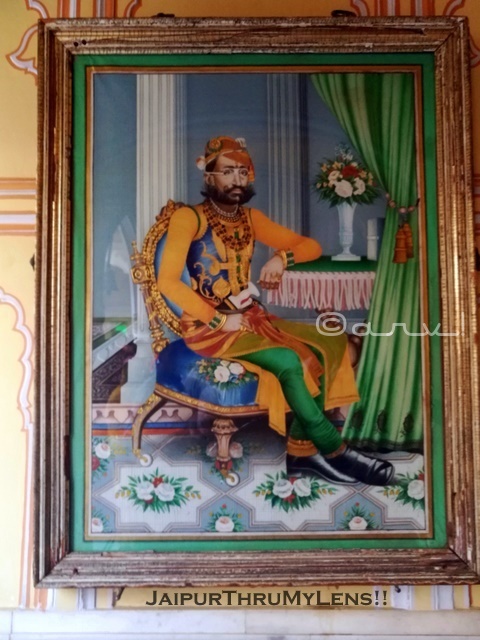
Red, green, and blue glass windows provided a view of the Chandra Mahal of the City Palace.
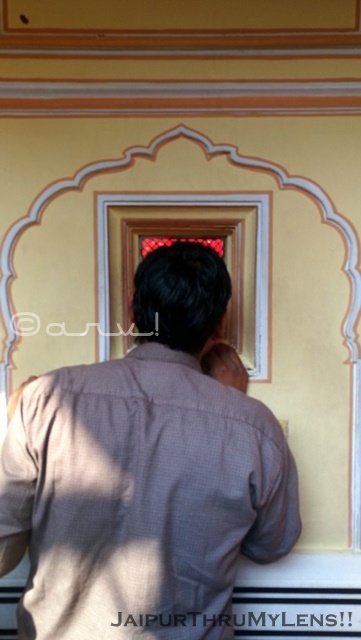
In general, Shiva temples are devoid of grandeur and are simple. This temple makes a departure from this norm. The idols of Lord Shiva and Parvati are adorned with precious stones and gold. And probably for this reason, they don’t permit photography of sanctum. The idol is a heavily adorned “Rup” of Shiva on a swing and is called Raj Rajeshwar.
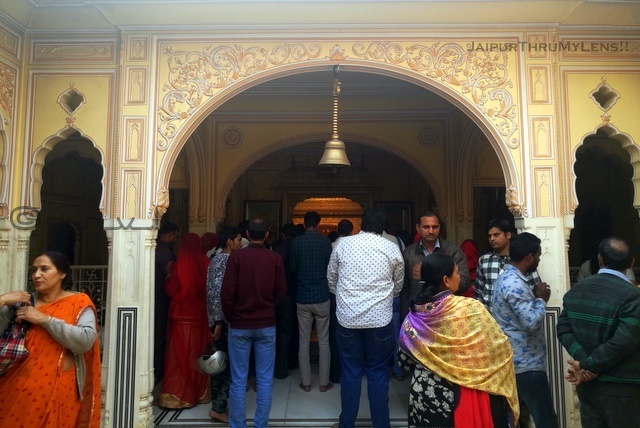
One might question why the temple has been named Raj Rajeshwar? There are two different assumptions. The first is that the temple is also associated with Tantric practices and Raj Rajeshwari is synonymous with occult and Tantric power. Here is a picture of Raj Rajeshwar Mandir in Jaipur circulating on social media.
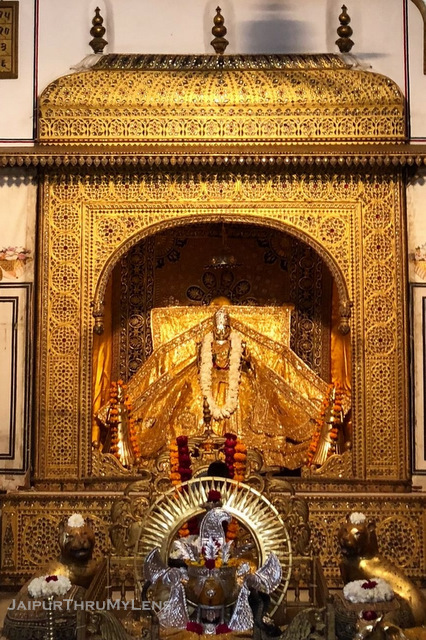
You can read my post on Sri Raj Rajeshwari Temple in Jaipur and its association with Maharaja Sawai Pratap Singh of Jaipur. The second one suggests this to be a temple of the king – Maharaja Sawai Ram Singh II, it was called Raj Rajeshwar. We probably won’t know for sure which one is true. The most famous Raj Rajeshwar Temple in India is in Maheshwar. After spending a couple of minutes in the temple, it was time to return back. Just when I reached the exit gate, I met this interesting gentleman wearing a beret in a joyous mood. His name was Sanjay and resides close to Galta Gate and he offered to apply Gulal on the forehead. He had a beautiful smile on his face which I wanted to capture in a picture. I sought his approval for a picture and clicked this on my smartphone.
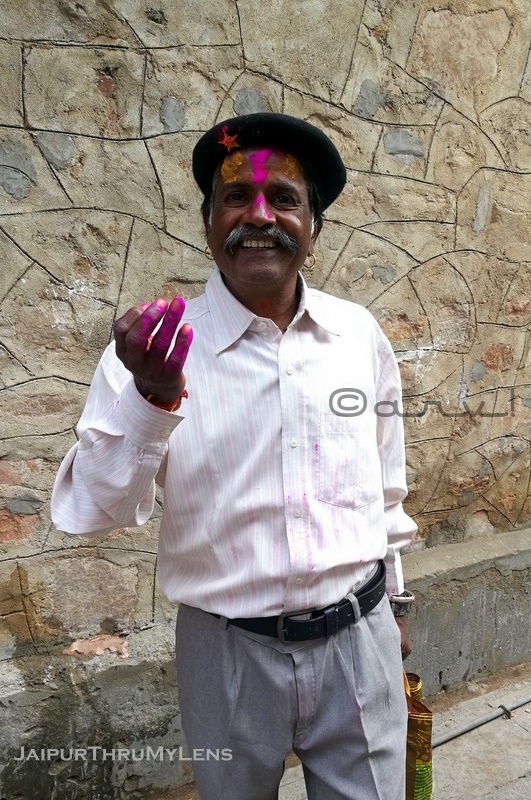
Raj Rajeshwar is one of the few temples that can be accessed from the Chandni Chowk area of Jaipur City Palace. Other temples are Brij Nidhi Temple, Pratapeshwar Temple, and Anand Bihari Ji Temple. Chandni Chowk is behind the Tripolia Gate.
Significance of Raj Rajeshwar Mandir in the history of Jaipur
It is claimed that Maharaja Sawai Ram Singh II used to worship every day in this temple. Tarkeshwar Temple is considerably older, and he commissioned renovations in this temple, the king couldn’t visit every day for practical reasons. This must have prompted him to establish one on the palace premises.
Maharaja Sawai Ram Singh II convened a religious conference called “Mod Mandir.” Initially, it was initiated by Maharaja Sawai Jai Singh, and eminent & learned Brahmins were part of it. The decisions of this committee were accepted all across India. The meetings of Mod Mandir would take place in this temple.
Often, personal guests of Maharaja Sawai Ram Singh II would also visit Raj Rajeshwar Temple. This temple differs from other Lord Shiva temples because of an element of “Tantra-Mantra” or occult power. Two of the most well-known aspects of Maharaja Sawai Ram Singh II are photography and being a Shiva devotee.
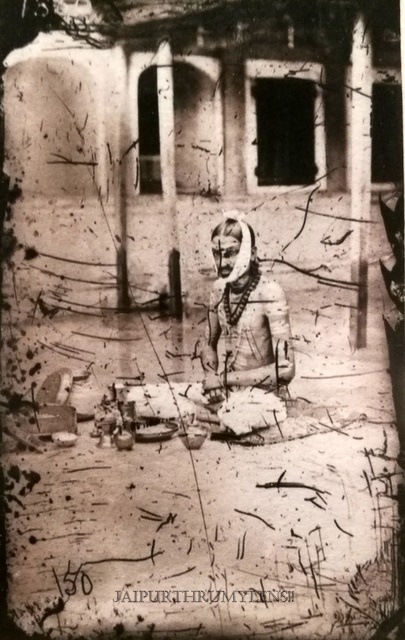
How to Visit Raj Rajeshwar Mandir in Jaipur?
The opportunity to visit Raj Rajeshwar Temple is limited. The temple is open to the public only on two occasions. One being Maha Shivratri and the other during Diwali. I’m glad I was able to visit the temple. For travelers visiting Jaipur and wanting to visit this temple, they need to time it well with these dates.
If you enjoyed reading this post, don’t forget to share it on your social media.
Follow me on Facebook Twitter Instagram
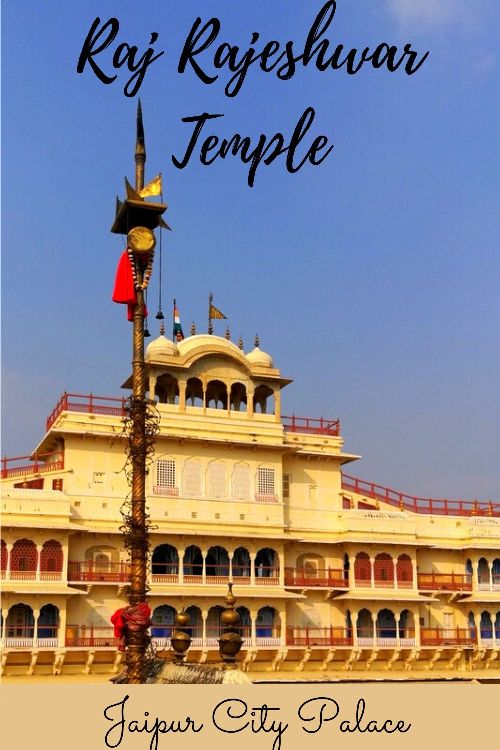
Discover more from JaipurThruMyLens
Subscribe to get the latest posts sent to your email.
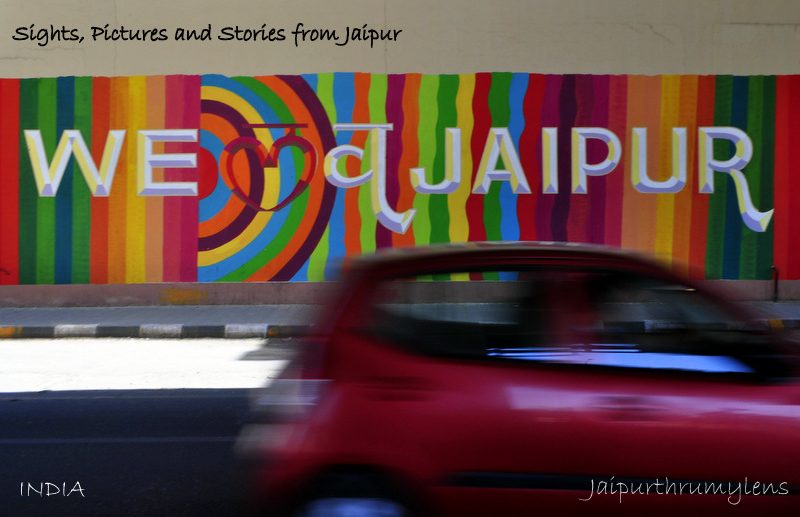
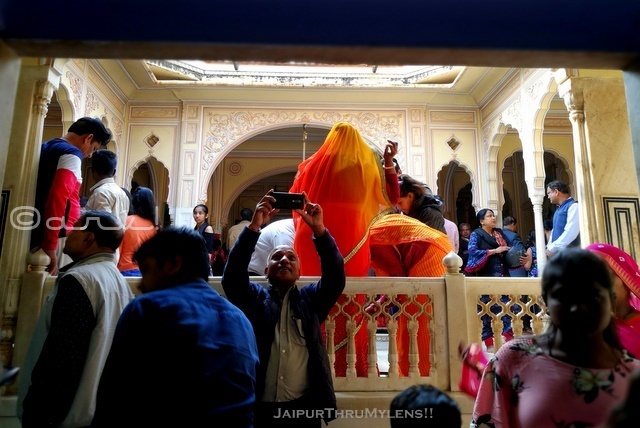
A lot of information!!
Wonderful post Arv. Despite staying in Jaipur for 28 years, never visited City Palace.
LikeLiked by 4 people
Deeksha, many of us sail in the same boat. I have hardly explored Delhi hahahahaa. Like we say”ghar ki murgi daal barabar”
LikeLiked by 2 people
Agreed Monika. Have gone to Amber fort so many times with relatives and friends that I remember its nook and corners😁 but probably no one ever wished to visit City Palace, so bina dekhe hee Bangalore aa gaye😀😁
LikeLiked by 2 people
Maybe the lockdown impact on travel will lure both of us to explore our current cities 🙂
LikeLiked by 2 people
Oh yes, right now I can visit any obscure place also.
Arv ka blog, Arv ki post, and we both are behaving like ‘begaani shaadi mei Abdullah deewana’ 😂😂
LikeLiked by 1 person
Backyard travel is a good option. Unfortunately, not many find this attractive. But give it a try.
LikeLiked by 1 person
I plan every year and somehow it just fizzles. Again hopeful for this year 😄
LikeLiked by 1 person
All the best
LikeLiked by 1 person
Deeksha, next time you are in Jaipur, visit and explore the city as a tourist. You will be astonished with new perspective.
LikeLike
I agree. We take our home town for granted. Given how historic Delhi is and all the turmoil, it underwent I’m sure there is so much to explore.
LikeLiked by 1 person
….. And some monuments have been restored & renovated to be added to the tourist map. Keeping my fingers crossed 🤞🏻🤞🏻
LikeLiked by 1 person
Great
LikeLiked by 1 person
Then someday you should….I understand you visit Jaipur only for a short duration but it’ll be a nice change, Deeksha.
LikeLiked by 1 person
Thanks a lot Arv, but Jaipur visit doesn’t seem to be happening till next year. Covid is spreading everywhere now. Within half a kilometer we have cases. You too be careful and safe.
LikeLiked by 1 person
I can understand, Deeksha. I have already written off this year completely for travel unless it is a road trip.
LikeLiked by 1 person
I never knew about this temple ……. like you shared its open on only two occasion so it must be unheard of by many.
There is so much to a place and its a reminder to me to revisit Jaipur as a traveler 🙂
LikeLiked by 1 person
Well, I don’t expect travelers and tourist to be aware of its existence. The irony is that most residents are not aware of this temple. Certainly, there are many places to explore. A good place for explorers. So when are you headed to Jaipur, next?
LikeLiked by 1 person
No clue. Let’s see how things shape up towards end of the year ….. I love Rajasthan and Jaipur I feel is my next door home.
LikeLiked by 1 person
Cool. Hope to see you in Jaipur soon. 🙂
LikeLiked by 1 person
This is a lesser-known temple with an interesting history.
I loved the picture of the gentleman Sanjay, what a candid shot.
LikeLiked by 1 person
I’m glad you liked that picture, Sarmistha. It certainly is one of the lesser known temples of the city. It is a royal temple.
LikeLiked by 3 people
Once again a post filled with information and interesting aspects of history. lovely photographs. There are so many places which we are unaware despite staying in the same city for years. Well written, Arv!
LikeLiked by 1 person
Absolutely. There are many new places to discover in our cities. Who can tell this better than you?
LikeLike
This is another interesting post on the rich cultural history of Jaipur. Your photos added charm to this outstanding photo essay, Arv.
LikeLiked by 1 person
Thanks. I’m happy you liked it. 🙂
LikeLike
Thank you Arv, for this wonderful post, it kind of makes me homesick to India.
LikeLiked by 2 people
I guess you need to visit India often, Cornelia. I know you love spending time here photographing people and places. I hope you get to visit soon. I’m glad you liked this post. 🙂
LikeLiked by 1 person
Thank you Arv, you are right I need to come to India more often, we’ll see when ever it will be possible again. Have a great weekend.
LikeLiked by 1 person
Thanks. You too have a great weekend.
LikeLike
A heritage well-preserved! I like that silver foil door arv! Lovely pics too. While I may never visit this temple but your post makes it alluring.
LikeLiked by 1 person
I can understand. That’s the whole idea of enabling a virtual tour through posts like this. 🙂
LikeLiked by 1 person
V v informative n interesting 2🙂
LikeLike
What a beautiful temple and informative post. Thanks for sharing this information with all of us. I definitely have to travel to your country. It looks so rich with tradition and history. 🙂
LikeLiked by 1 person
I’m sure you will love to explore Jaipur, Lisa. Thanks for sharing your thoughts. 😊
LikeLiked by 1 person
The fact that the temple is open to public only on two occasions intrigues me. I had no idea about Ram Jhara. Reading it for the first time. I have seen such pots but did not know they have a unique name. Liked the dhol kid photo and the Mr. Sanjay too.
LikeLike
Very interesting and informative post.
LikeLiked by 1 person
I’m glad you liked it, Nikhar
LikeLike
Another very interesting and colourful post, Arv. I really enjoyed reading about the history of this wonderful temple. I love your photos of the building itself (that door is fabulous) but the photos of Maharajah Sawai Ram Singh II and of the joyful Sanjay and the boy playing the drums give the place so much more meaning. I’m glad to got to see it, at last.
LikeLiked by 1 person
Thanks, Millie. Appreciate the read and your thoughts. Certianly, it is a historic temple and not accessible to the public on a regular basis. This all must be so exotic from your perspective. 🙂
LikeLiked by 1 person
It is, Arv. As I’ve said before, India is such a vibrant and colourful country, and your posts about your country and these fabulous temples enthral me. Thank you for sharing. 😀
LikeLiked by 1 person
I’m glad you enjoy these posts, Millie. 🙂
Did you check out my recent post on a park here in Jaipur which was inspired by the Victorian parks of the UK?
LikeLiked by 1 person
I noticed your post about a Victorian-style park, and intend to read it very soon. 😀
LikeLiked by 1 person
Great. Thanks, Millie.
LikeLike
I look at Maharaja Sawai Ram Singh II
And my mind goes to Ranveer Singh in his movies.
Im so disappointed that i missed this when i was in Jaipur.
LikeLiked by 1 person
Kavitha, getting an access to this temple is difficult because it is open only on 2/3 occassons in the entire year. Diwali would be good time to visit Jaipur generally and also to visit this temple.
LikeLike
Don’t called these Architecture or niches or floral design on wall as Mughal Styled…. because Mughal never created anything . They just Captured the Palaces or only copied these style from Rajput and Persian Culture. And all the artists who created these Masterpieces were Hindus… because in Islam doing any kind of Art is Haraam. So according to the Rules of Art you mentioned these Artworks as Rajput Style or Persian Style but Never Recognise them as Mughal Style.
LikeLike
I am surprised how they maintainthe heritage. Those metal doors are so marvellous.
LikeLike